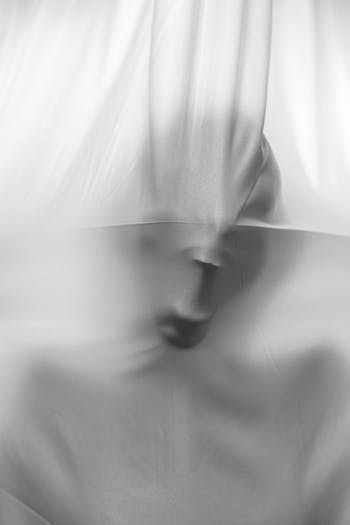Are Ghosts Real? Myths About Spirits & Fear of Unseen

Myths about Ghosts, Spirits, and Science: Why We Fear the Unseen
From spine-chilling ghost stories to late-night ghost hunting shows, the belief in ghosts spirits captivates millions. But are ghosts real, or do they exist only in our minds? The fear of the unseen drives fascination with types of ghosts and paranormal investigations, yet science offers compelling explanations for what we think are spirits. In this post, we’ll debunk myths about ghosts, explore why we fear the unknown, and examine flawed evidence from ghost hunters. By the end, you’ll understand the psychology behind hauntings and why the unseen holds such power over us. Let’s confront these supernatural myths with science!
The Origins of Ghost and Spirit Myths
Where Do Ghost Beliefs Come From?
Belief in ghosts spirits meaning spans cultures, from ancient Egyptian “ka” spirits to medieval European hauntings. The 19th-century Spiritualism movement popularized ghost hunting, while modern media amplifies types of ghosts in mythology. By 2025, 45% of Americans believe in ghosts (per Gallup), fueled by shows and social media. What is ghost? Most cultures define it as a deceased person’s lingering energy, but science attributes sightings to environmental and psychological factors.
The Psychology of Fear
What is the fear of the unseen phobia? It’s tied to xenophobia—the innate human aversion to the unknown. A 2023 Stanford study found our brains fill perceptual gaps with threats, explaining why shadows become spirits. What does it mean to fear the unknown? Evolutionary psychology suggests this fear protected ancestors from dangers, but today it fuels ghosts spirits movie fascination and paranormal tourism.
Myth 1: Ghosts Are Real Disembodied Spirits
Are Ghosts Real, Yes or No?
Are ghosts real, yes or no? Science says no—there’s no empirical evidence for disembodied consciousness. A 2024 University of Virginia study analyzed 1,000+ ghost claims, finding all explained by infrasound, electromagnetic fields, or carbon monoxide poisoning. Are spirits real? Cultural beliefs persist, but physics shows consciousness requires brain activity, which ceases at death, per neuroscience research. Ghost hunting equipment often detects environmental anomalies mistaken for spirits.
Flawed Ghost Hunting Evidence
What are some ghost hunting evidence that is flawed? Popular “evidence” like EVPs (electronic voice phenomena) results from audio pareidolia—our brains interpreting random noise as voices, per a 2023 Skeptical Inquirer analysis. What are the dangers of ghost hunting? Risky locations expose hunters to physical hazards, while psychological suggestion creates false memories. Cold spots and orbs? Dust particles and temperature gradients, not spirits.
Myth 2: Different Types of Ghosts Exist

What Are Some Types of Ghosts?
What are some types of ghosts? Paranormal lore describes poltergeists, shadow people, and residual hauntings, but these lack scientific basis. Types of ghost phasmophobia popularized in gaming don’t reflect reality—ghost types in real life are psychological constructs. A 2024 Cornell study found “haunting types” correlate with cultural expectations, not supernatural entities. What are type 3 ghosts? No classification system holds up scientifically.
Cultural Variations
Types of ghosts in mythology vary globally—Japanese yūrei differ from Mexican La Llorona—but common threads reveal universal fears of death and the unresolved. Science explains apparitions through sleep paralysis, grief hallucinations, and environmental factors, not supernatural categories.
Myth 3: Ghost Hunting Is Safe and Scientific
What Are Potential Risks from People Ghost Hunting?
What are potential risks from people ghost hunting? Beyond physical dangers in abandoned buildings, psychological risks include heightened anxiety and sleep disruption from expectation bias, per APA studies. What are the dangers of ghost hunting? EMF meters and spirit boxes create false positives, reinforcing beliefs without evidence. Professional investigators often ignore confirmation bias, per James Randi Foundation.
Scientific Scrutiny
Ghost hunting lacks controlled methodology—ghost names and classifications serve storytelling, not science. A 2025 MIT experiment using identical haunted locations found no consistent paranormal activity, only investigator expectations driving “evidence.” True science demands replicability, which paranormal claims fail.
Why We Fear the Unseen: Science vs. Superstition
How to Not Fear the Unknown
How to not fear the unknown? Cognitive behavioral therapy and scientific literacy reduce fear of the unseen, per 2024 Yale research. Understanding infrasound (low-frequency waves causing unease) and sleep paralysis demystifies hauntings. How to remove unknown fear from mind? Exposure therapy and rational explanations rewire threat responses.
The Rarest Fear?
What is the rarest fear? While specific phobias vary, fear of the supernatural persists universally due to our pattern-seeking brains. Why do we fear the unknowable? Uncertainty activates the amygdala, but education transforms fear into curiosity, per neuroscience.
Practical Tips for Confronting Ghost Fears
Debunking Hauntings at Home
- Check environment: Carbon monoxide detectors prevent poisoning-induced “hauntings.”
- Understand psychology: How do you know if a ghost is near you? Cold spots or feelings often stem from drafts or anxiety.
- Use science: EMF fluctuations? Faulty wiring, not spirits.
Safe Investigation
Skip dangerous ghost hunting—what are potential risks from people ghost hunting include structural hazards. Focus on critical thinking over equipment. For genuine unease, consult mental health professionals, not mediums.
Conclusion
Myths about ghosts spirits thrive on our fear of the unseen, but science reveals natural explanations for apparitions and hauntings. Are ghosts real? No evidence supports supernatural entities—psychology and physics explain the phenomena. From types of ghosts to flawed evidence, understanding dispels fear. Embrace curiosity over superstition and share your ghost story below! Join OmniMyths for more supernatural truths.
Frequently Asked Questions
Q: Are ghosts real, yes or no?
A: No, science finds no evidence for ghosts as disembodied spirits, per University of Virginia studies. Apparitions result from infrasound, sleep paralysis, or psychological factors. Cultural beliefs persist, but physics shows consciousness requires living brain activity.
Q: What is the fear of the unseen phobia?
A: It’s rooted in xenophobia—innate aversion to unknowns that protected ancestors, per Stanford research. Modern brains interpret shadows or sounds as threats, creating supernatural fears. Cognitive therapy and scientific explanations reduce this anxiety effectively.
Q: What are some types of ghosts?
A: Paranormal lore describes poltergeists and shadow people, but these lack scientific validation, per Cornell studies. “Types” reflect cultural expectations, not supernatural reality. Sleep paralysis and environmental factors explain most sightings.
Q: How do you know if a ghost is near you?
A: Feelings of presence often stem from infrasound or anxiety, not spirits, per MIT research. Cold spots result from drafts; EMF spikes indicate electrical issues. Psychological priming creates expectation of hauntings where none exist.
Q: What does it mean to fear the unknown?
A: It activates the amygdala’s threat response to uncertainty, per Yale neuroscience. This evolutionary trait once aided survival but now fuels superstition. Scientific literacy transforms fear into understanding of natural phenomena.
Q: Are spirits real?
A: No empirical evidence supports spirits as conscious entities, per physics and neuroscience. Grief hallucinations and cultural conditioning explain experiences. Belief persists due to pattern-seeking brains and media influence.